Ever since Congaree was named a real National Park in 2003, I’ve wanted to see it.
Congaree is bottomland forest, meaning swamp. And it’s old-growth.
In fact, it’s the largest remaining expanse of old-growth swamp left in the country—and by “expanse” we’re talking 11,000 acres, out of a total 27,000 acres that make up the park.
When I Got There
The Congaree River, which runs through parkland, was in flood. A young ranger with green eyes to match her uniform told me that the flood was the fourth highest in history. In paper-and-pencil human history.
She told me part of the boardwalk was underwater. I wouldn’t be able to hike the entire loop, which normally would be 2.6 miles. She also told me to watch for a copperhead, fleeing the floodwaters, that was coiled on the boardwalk near Marker #14.
I thanked her.
Right away I noticed the size of the loblolly pines. I’ve seen a lot of pines, but these were the biggest I’ve seen. I honestly forgot to take photos of them.
Champion Trees
According to the Old-Growth Forest Network, at least 25 champion trees can be found in Congaree. Four of them are over 160 feet tall. The tallest loblolly pine is there. It’s 169 feet tall.
The Old-Growth Forest Network says this about Congaree: “The old-growth forest forms one of the highest temperate deciduous forest canopies remaining in the world.”
Did you get that?
One of the highest forest canopies remaining in the world.
That means in Congaree you can look up and see blurry treetops towering above you. One hundred sixty feet up. You can feel small. Appropriately small. Beautifully small. Humblingly small.
Underwater
I went in one direction on the boardwalk until it ran out. Then I turned around and walked in the other direction.
Nobody was around. A storm was coming, set to dump more water on inland South Carolina. But I didn’t have the boardwalk to myself.
There was this gray squirrel, who let me get way too close.
And then of course the copperhead. You can bet I was watching my step near Marker #14.
Up in the trees were woodpeckers and Carolina wrens. Out on a log was a turtle.
Least Visited
This park is one of the 10 least visited in the country. Yet it’s completely free and appears to be open all the time.
I hope you get to go. I hope you get to walk underneath that towering canopy, among the ancient giants.
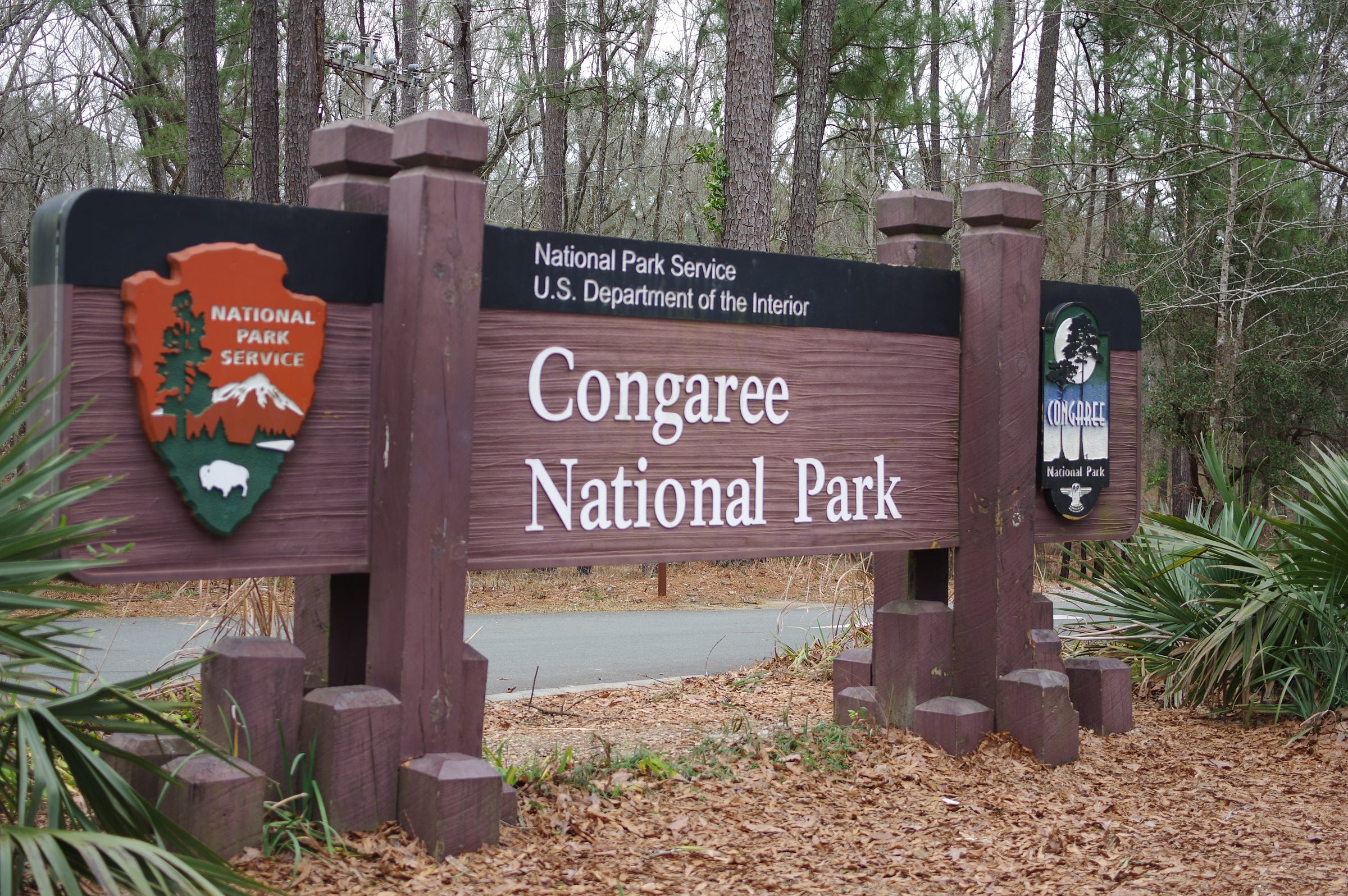
States with no national parks are
Alabama
Connecticut
Delaware
Georgia
Illinois
Iowa
Kansas
Louisiana
Maryland
Massachusetts
Mississippi
Nebraska
New Hampshire
New Jersey
New York
Oklahoma
Pennsylvania
Rhode Island
Vermont
Wisconsin
Ocmulgee
We are trying to remedy Georgia’s lack of a national park, hoping that the next one will be created here. Ocmulgee National Park—the place where the Muskogee (Creek) Nation first “sat down”—is under consideration. I’ve written about it here.
The Surprise
This retreat center was the last thing I expected to see in conservative rural South Carolina. The weather was too chilly to stop and check it out. Last Friday was just not a day I wanted to “travelite.”
Peace and love to you. I hope you’re staying warm, wherever you are, and I hope that the ancient giants of Congaree visit you in your dreams.

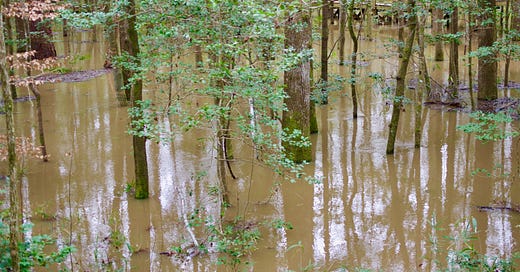






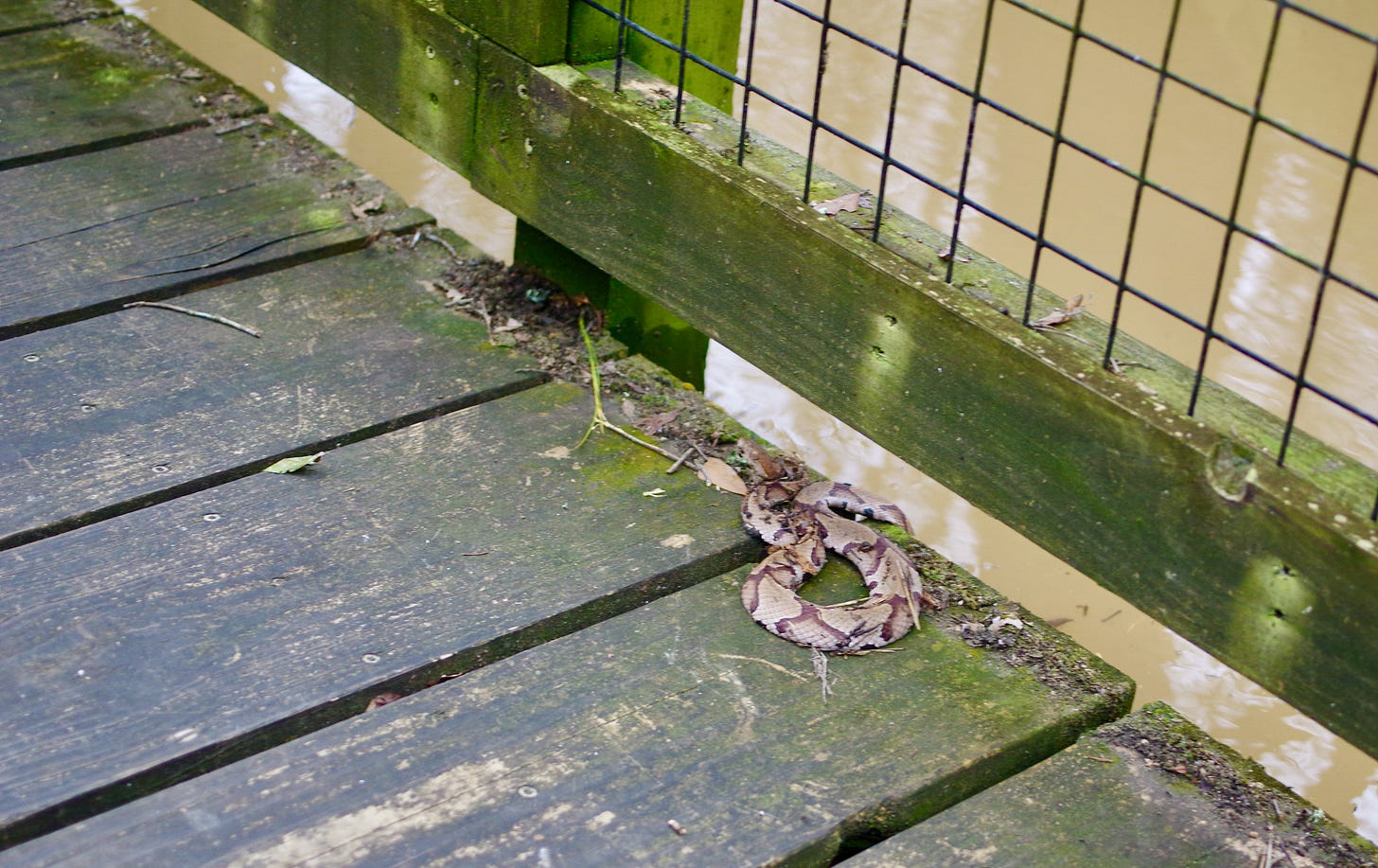

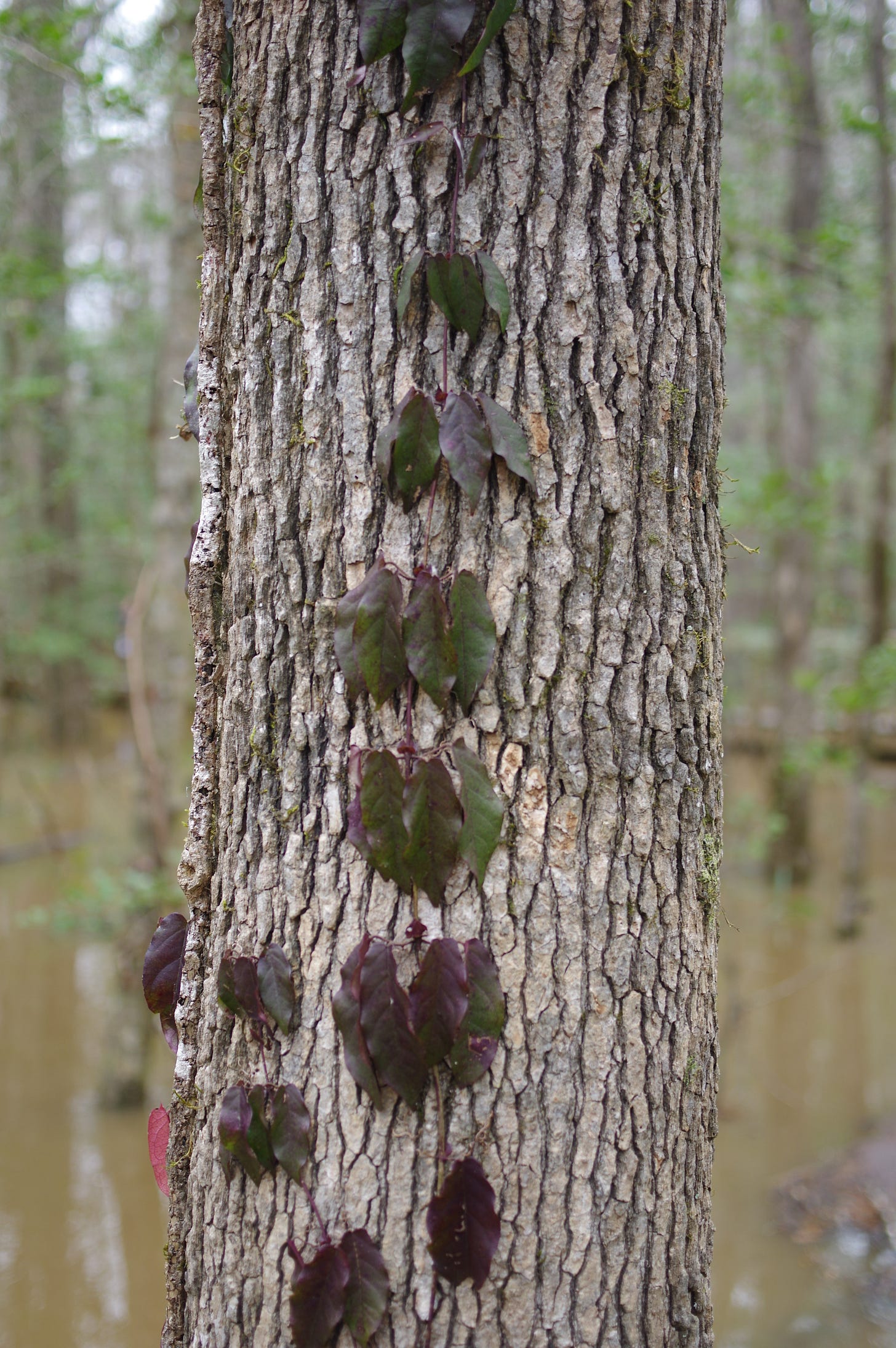
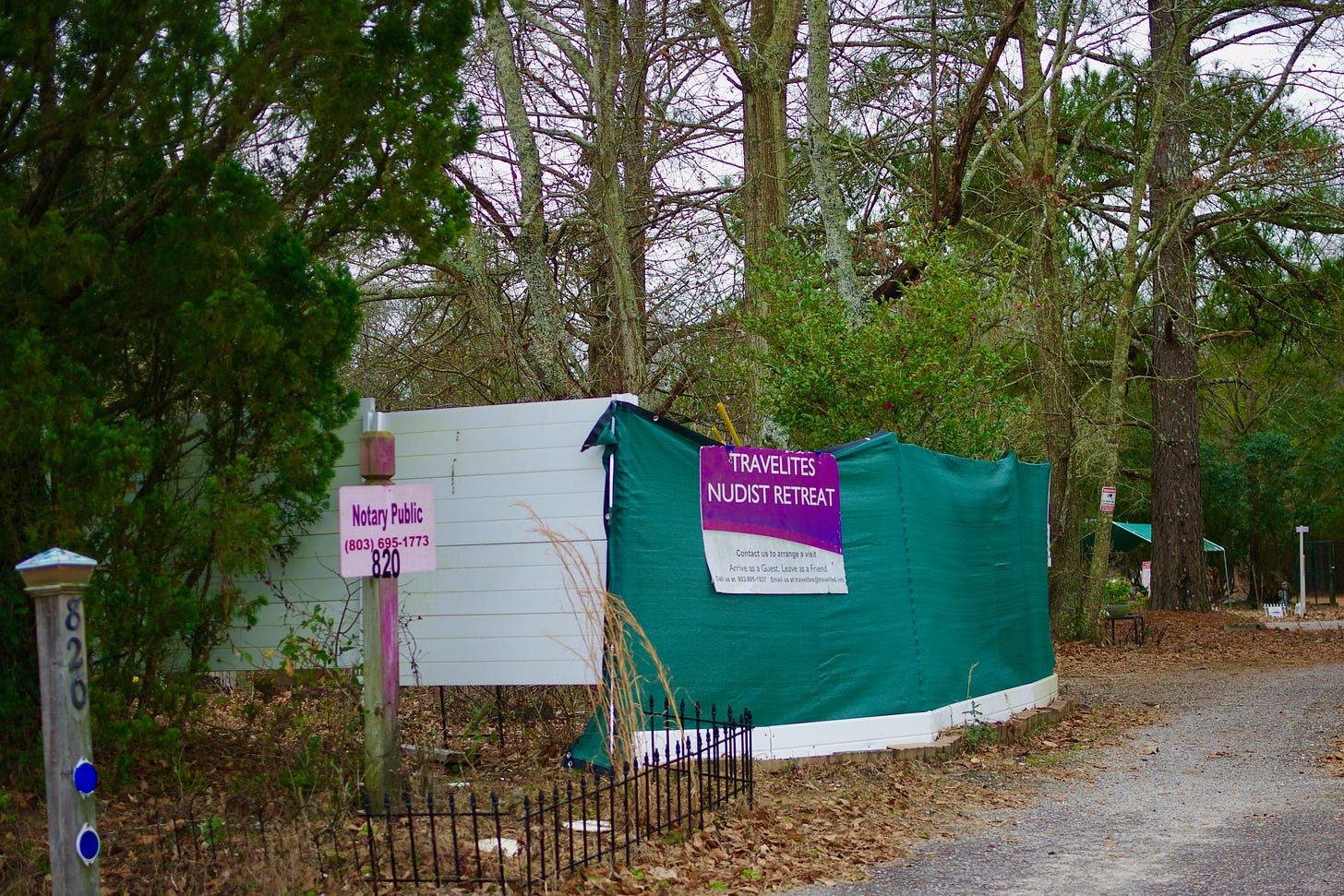
Congaree Swamp is one of the jewels of the South. The first time I saw those loblollies I cried for what they could be as I thought of the rows of monocrops of them that have replaced natural pine forests across the coastal plain. It helped me remember what a gift that tree is and to not think ill of it just because it has been commodified by the forest products industry.
Reminds me of the Frances Beidler Forest near Harleyville SC